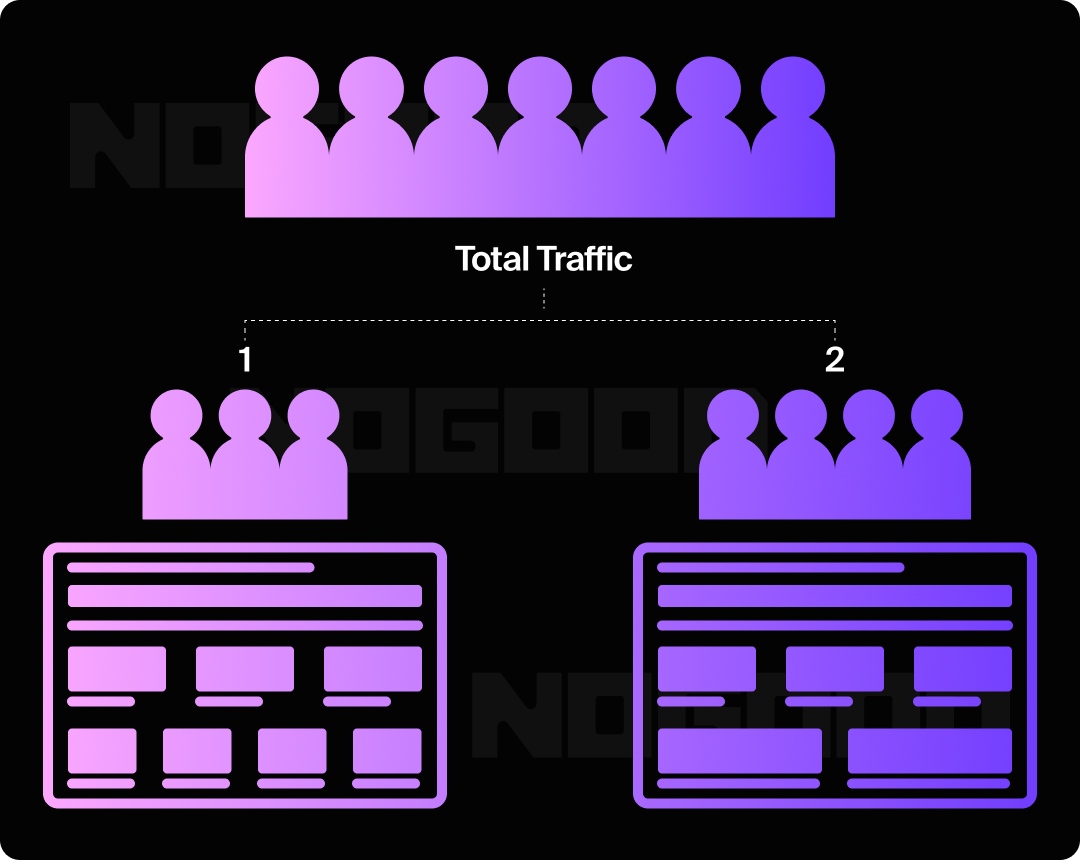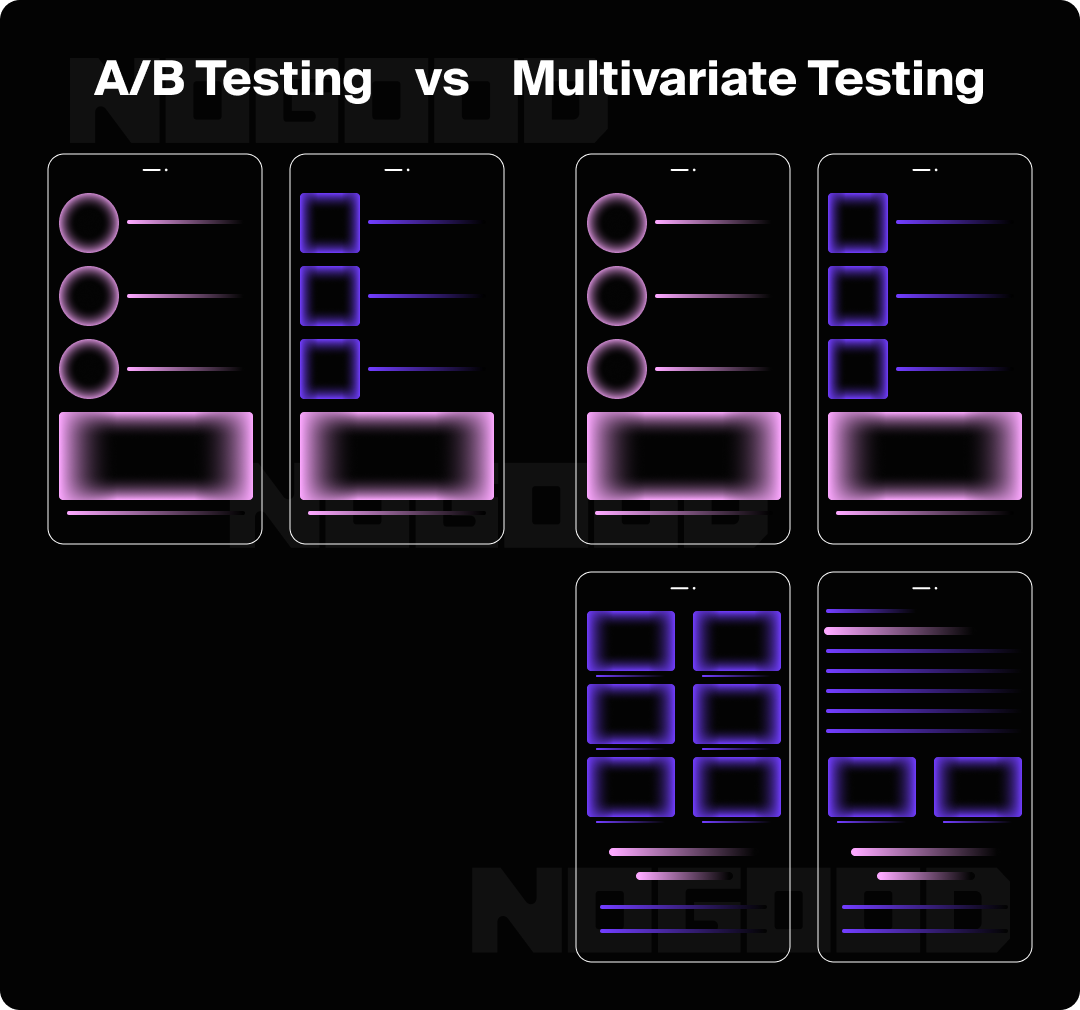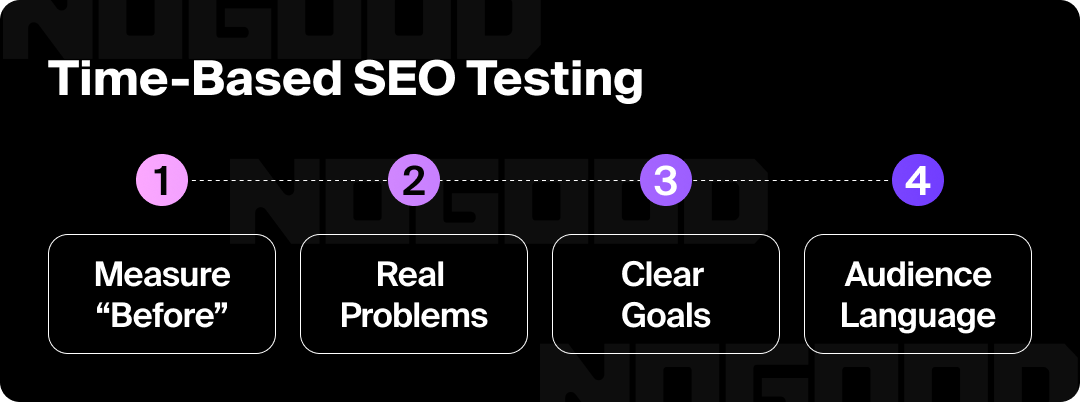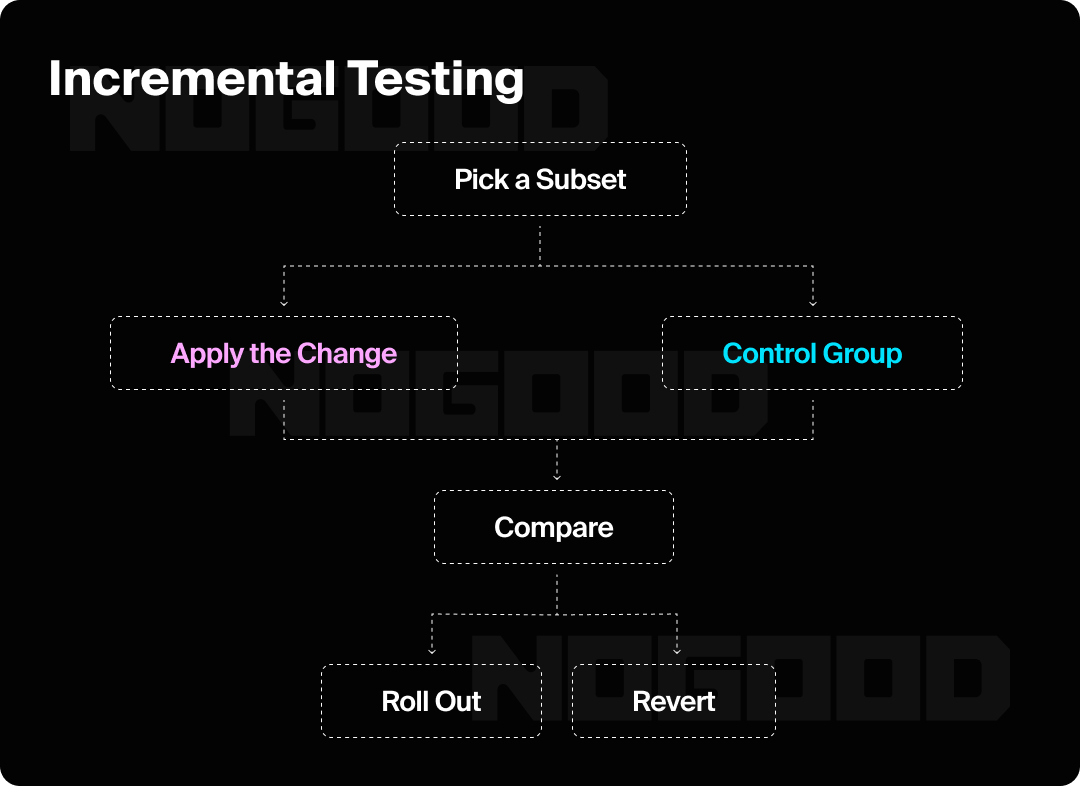SEO can feel a little like alchemy. You add in some keywords, sprinkle in some backlinks, and hope Google turns it into gold. But in reality, SEO is more like a science. It’s about running experiments, testing variables, and proving what actually works.
That’s where SEO testing comes in. Think of it as your marketing lab: you make a hypothesis (“If I rewrite this title tag, CTR will go up”), run the test, and track the results. No guesswork, just data.
And in 2026, testing shouldn’t exclusively focus on Google’s blue links anymore. With AI Overviews, Gemini, and Perplexity answering user questions directly (hello, zero-click search), your content has a whole new visibility test to pass:
- Will AI pull your content into its summary?
- Will your brand get cited as the source?
- Will your answer actually get surfaced instead of your competitor’s?
The brands winning right now aren’t the ones guessing. They’re the ones testing, learning, and adapting fast.
What Is SEO Testing?
SEO testing is the process of running controlled experiments on your website to see which changes improve visibility, rankings, or engagement.
If that sounds like A/B testing, you’re right; except instead of swapping button colors, you’re testing things like:
- Does a new title tag get more clicks?
- Does adding FAQs help capture AI overviews?
- Does restructuring content help an LLM pull your answer more cleanly?
The goal is simple: stop guessing what Google might like and start measuring what works.
And today, SEO tests are going beyond just rankings. You’re not just asking, “Did this boost my position?” but also, “Did this land me in an AI summary, a featured snippet, or a zero-click result?”
Types of SEO Testing (Plus, Some Ideas to Try)
SEO testing isn’t one-size-fits-all. Depending on your site size, traffic, and goals, different methods will make sense. Here are the main testing approaches (plus ideas you can actually run):
1. Split (A/B) Testing

Change one element at a time, like a title tag or meta description, and compare results against a control group. This keeps things clean and avoids false positives from seasonal swings or external factors.
- Test a question vs. a statement in your title tag.
- Add [2026 Update] or [Free Guide] to see if CTR bumps.
2. Multivariate Testing

Instead of one tweak, test multiple elements at once (e.g., headline + CTA + internal links). Great for spotting which combo performs best, but harder to isolate the “why” behind the results.
- Try different headline + CTA + image pairings.
- Experiment with FAQs + schema + bullet formatting together.
3. Time-Based Testing

Roll out a change to a single page (or section) and measure performance over a set period. Then revert and compare. Best for smaller sites that don’t have the traffic to split-test effectively.
- Add a “step-by-step” list format to a guide.
- Test a story-led intro vs. a stat-led intro.
4. Incremental Testing

Make a change to a subset of pages (for example, 50 product pages) and monitor how those pages perform against the rest. This works well for big websites where testing across templates or categories gives you enough volume.
- Add a “step-by-step” list format to a guide.
- Test a story-led intro vs. a stat-led intro.
5. AI Prompt Testing

Feed your target queries into ChatGPT, Gemini, Preplexity, and any other LLM your customers or audience uses; track whether your content is being surfaced in responses. Update formatting, schema, or entity coverage and then re-run prompts to see if you’ve earned visibility.
- Add succinct definitions and numbered steps to FAQs.
- Expand mentions of your brand, product, or industry terms to improve recognition.
Quick Takeaway:
- Use A/B tests when you want clean, controlled results.
- Use multivariate or incremental tests when you’re working at scale.
- Use AI prompt testing to see if your content shows up in answer engines.
How To Run an SEO Test (Step by Step)
Running an SEO test isn’t complicated, and the insights you’ll gain are usually well worth your efforts, as long as you do it right. Here’s how to effectively run an SEO test.
Step 0: Pre-Checks
Before we dive into the actual test, there are a few bases to cover to ensure your experiment runs smoothly and results are accurate. So don’t get lazy and skip this part!
- Indexation & Coverage: Page is indexed, canonicalized correctly, not blocked by robots.
- Baselines Captured: 28–35 days of GSC data (queries, position, CTR), analytics (sessions, conversions), and CWV.
- SERP Sanity: Screenshot current SERP; note competitors, snippet owner, PAA panels, AI Overview behavior.
- Page Grouping: Decide if this is a single URL, template, or cluster test.
Not convinced? Here’s why pre-checks matter: Skipping them is like running a lab experiment without measuring your starting point. You’ll never know if the “result” came from your change or some hidden variable. Pre-checks ensure your page is indexable, your baseline is locked, and you’ve captured SERP context so the test data is clean and trustworthy.
Step 1: Define the Problem & Hypothesis
Write it like the little scientist that you are.
Template:
- Problem: “Low CTR despite avg position 3.1”
- Hypothesis: “If we switch to a question‑led title + year, CTR will increase by 15% at stable positions.”
- Audience/intent: e.g., “informational / how‑to”
- Scope: “/blog/seo‑testing, /blog/technical‑seo/* template”
- Primary KPI: CTR @ position
- Secondary KPIs: snippet/AI Overview inclusion, dwell time, conversions
Things to Avoid:
- Vague goals (“improve SEO”)
- Mixed intents in one cohort (apples/oranges traffic)
Step 2: Choose the Right Testing Method
- Have 50+ similar pages? → Incremental or split (A/B) by template/cluster
- Only a few high‑value pages? → Time‑based test (pre/post with holdback if possible)
- You’re optimizing for answer engines? → AI prompt testing alongside one of the above
- Many elements moving together? → Multivariate (be ready to interpret combos)
Mapping:
- Title or meta tweak → A/B or time‑based
- Format (FAQs, steps, tables) → Incremental or time‑based
- Internal linking → Incremental (subset vs. rest)
- Schema → Incremental on cohort
- Performance (CWV) → Incremental on template
- AI visibility → Prompt test (ChatGPT/Gemini/Perplexity) + track citations
Step 3: Define Your KPIs
Pick one primary KPI that maps to your change; keep 1–3 secondaries for context.
Quick Mapping:
- Title or Meta: Primary: CTR (position‑normalized). Secondary: avg position, snippet gain.
- Format & Structure: Primary: snippet or AI Overview inclusion. Secondary: dwell time, scroll depth.
- Internal Linking: Primary: page depth / assisted conversions. Secondary: target page sessions.
- Schema: Primary: rich‑result or AI inclusion rate. Secondary: CTR.
- CWV: Primary: LCP/INP rates (good %). Secondary: bounce.
- AI Prompt Tests: Primary: LLM citation/mention rate. Secondary: placement quality in the summary.
Example: Position‑normalized CTR: Compare CTR within position buckets (e.g., positions 1–2, 3–5, 6–10) so rank shifts don’t masquerade as CTR wins.
Step 4: Design the Test (Clean Groups, Clean Data)
- Cohorting: Bucket by URL pattern or random hash. Balance groups on baseline impressions, position, and device.
- Minimum Data: Aim for ≥500–1,000 impressions/week per variant for CTR tests; extend duration if lower.
- Seasonality Control: Start both variants on the same day; avoid holidays, big launches.
- Change Isolation: One meaningful change or a declared “bundle” (and name the bundle).
QA Checklist Before Launch:
- Titles render live (view‑source), schema validates, canonicals intact, links resolve, no CLS regressions, analytics firing.
Step 5: Implement the Change
Examples (pick what matches your hypothesis)
- Title or Meta: Add question‑led phrasing + year + value prop
- e.g., “What Is SEO Testing? (2026 Guide to A/B, Multivariate & AI Visibility)”
- Format: Add a 2‑sentence definition, a 5‑step numbered list, and an FAQ block (3–5 Qs)
- Entity Coverage: Name core entities (brand, product, category, location) once in intro, once in body, once in FAQ
- Schema: FAQPage or HowTo (JSON‑LD), keep it lean and accurate
- Internal Links: Add 2–3 contextual links with descriptive anchors to relevant supporting pages
- Core Web Vitals (CWV): Compress hero images, lazy‑load below‑the‑fold, preconnect critical domains
Step 6: Run the Test
- Run Length: 2–4 weeks minimum; extend if impressions are low or SERPs are volatile.
- Volatility Watch: If a core update hits or a big competitor revamps, pause or note it prominently.
- Data Hygiene: Exclude branded queries if you’re testing informational titles (or segment them).
Step 7: Measure & Analyze
- Compare vs. Baseline and Control (same weekdays, same device mix).
- Segment Smartly: device, country, query intent, page type.
- Quantify Lift: ΔCTR (abs & rel) within position buckets; Δinclusion in snippet/AIO; Δcitations in LLMs.
- Decide: Ship, iterate, or revert.
Lightweight Significance Sanity:
- Look for consistent directional lift across ≥2 weeks and ≥2 segments (e.g., mobile + desktop)
- Big wins usually show 10–20%+ relative CTR lift; smaller wins may need more time/data
Step 8: Rollout & Guardrails
- Rollout Plan: Push to the remaining cohort or template with a 10–20% holdback for 1–2 weeks.
- Monitoring: Watch KPIs for decay; keep a regression log.
- Documentation: Update playbooks so wins become defaults.
Step 9: Document Everything
Use a simple, living SEO log report your team can copy:
SEO Test Log (Example Fields):
- Test name
- URLs/template
- Hypothesis
- Change summary (screenshots)
- Method (A/B, incremental, time‑based, AI prompt)
- Dates (start/stop)
- Primary KPI + baseline
- Secondary KPIs
- Results (numbers + short read)
- Decision (ship/iterate/revert)
- Notes (SERP changes, updates, caveats)
Step 10: Parallel AI Prompt Testing Workflow
- Baseline: For target queries, record if your page appears or is cited in ChatGPT, Gemini, Perplexity. Save screenshots/links.
- Optimize Page: Add crisp definition (1-2 sentences), numbered steps, entity mentions, and lean FAQ schema.
- Re‑prompt: Same queries, same wording. Record changes (cited or not cited, position in the answer, wording pulled).
- Track Over Time: Re‑run monthly; note decay or improvements.
- Escalate Fixes: If you’re still not cited, deepen entity coverage, add authoritative sources, and strengthen internal links from high‑authority pages.
Want to make Prompt Testing for AI even easier? Check out Goodie.
SEO Testing Example Scenario
- Scenario: Blog guide with avg position 3.2, low CTR (2.8%).
- Hypothesis: If we switch to a question‑led title with the current year and add a five‑step list + three FAQs, we’ll raise CTR by 15% without losing rank and gain AI Overview inclusion.
- Method: Incremental test across 30 similar blog posts (15 control, 15 variant), balanced on baseline impressions and position.
- KPIs: Primary: CTR @ position. Secondary: snippet and AIO inclusion, dwell time.
- Duration: 4 weeks.
- Result (Hypothetical):
- CTR @ positions 3–5: +18% variant vs. control
- Snippet win rate: +12pp
- AIO inclusion: from 0 → 27% of tracked queries
- Dwell time: +9%
Based on these results, here’s what I would do:
- Decision: Ship to template with 20% holdback; monitor 2 more weeks.
- Notes: One competitor changed title mid‑test; effect consistent across mobile/desktop.
Common SEO Testing Mistakes
Even the smartest of marketers run tests that flop; not because their ideas were bad, but because their process was messy. Here are some things to watch out for:
- Calling the Test Too Early: Running an SEO test for one week and declaring victory is like tasting cookie dough and saying the cookies are done. SEO takes time; most tests need 2-4 weeks minimum.
- Testing Too Many Things at Once: If you change the title, schema, and internal links all at once, you’ll never know what actually moved the needle. Bundle only if you’re intentionally testing a combo.
- Ignoring AI Visibility Metrics: Ranking jumps look great in a dashboard, but in 2026, the real question is: are you showing up in AI Overviews or getting cited by ChatGPT or Perplexity? If not, you may be testing the wrong thing.
- Forgetting to Define Success Up Front: No clear KPI = no clear result. Always decide what metric matters most before you launch the test.
- Skipping Pre-Checks: Broken schema, indexing issues, or missing baselines will tank your data. (Pre-checks aren’t optional; they’re the control group for your control group.)
- Abandoning Documentation: Running tests without logging hypotheses, dates, and results means you’ll repeat the same experiments six months later and wonder why you’re not learning faster.
Tip: A failed test is only a wasted test if you can’t explain why it failed. Document, learn, and try again.
Stop Guessing & Start Testing!
SEO isn’t about gut feelings or sprinkling keywords in like they’re confetti. A successful SEO strategy needs experiments to see what works and then doubling down on it. Testing takes the guesswork out of growth, and it’s how you win not just on Google but in AI Overviews, snippets, and answer engines.
The brands that thrive aren’t necessarily the ones shouting the loudest. They’re the ones testing, adapting, and proving it with data. And if you’d rather skip the trial-and-error? We’ve got you covered. At NoGood, testing is kind of our thing.
SEO Testing FAQs
What is SEO split testing?
SEO split testing (or A/B testing) means making one change to a group of pages while keeping another group unchanged, then comparing results. This isolates the impact of that single change.
How long should an SEO test run?
Most SEO tests need at least 4+ weeks to account for fluctuations in traffic and rankings. Low-traffic sites may need even longer to gather enough data.
What’s the difference between split testing and multivariate testing?
Split testing changes one element at a time (like a title tag). Multivariate testing changes several elements at once (like title, CTA, and internal links) to see which combo performs best.
Why is SEO testing important in 2026?
Visibility isn’t just about ranking in the top 10 anymore. You want to be pulled into AI Overviews, cited in generative search, and standing out in zero-click results. Testing helps you adapt to this new search medium.
What tools can I use for SEO Testing?
- Google Search Console & GA4 for baselines and KPIs.
- SEO testing platforms (e.g., SearchPilot, SplitSignal) for split tests.
- AI search checks (prompting AI search engines) to measure LLM visibility.






